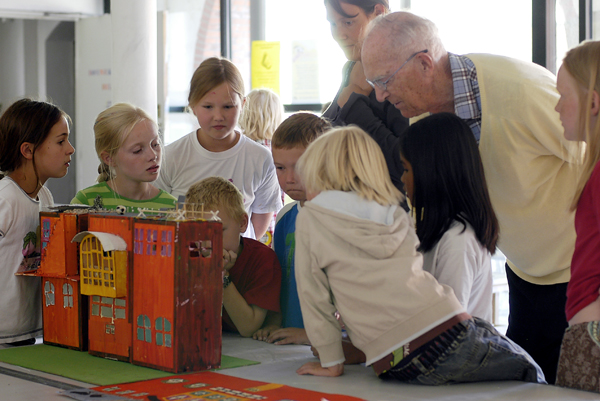Co-written by Pernille Grønbech

The days of the all-powerful manufacturing industry are dwindling, service industries are becoming saturated and knowledge workers commoditized. So, what values, beliefs and attitudes need to be embraced by the next generation to prosper in the future? The old way of landing a secure and well-paying job was to learn to read, write and do arithmetic. Today, however, these skills have become so wide spread that one cannot make a good living without expanding one's horizons beyond these basics. Today's Creative Economy calls for individuals with values, beliefs and attitudes that foster a creative reinvention of how meaning will be defined in our world.
Developing creative individuals takes a society that values and promotes curious, proactive qualities, interdependence, responsibility and accountability. The process of building these well-rounded citizens starts with kindergarten and continues throughout life, constantly disseminating and transferring learning to the next generation. In the past, strong vehicles for educating children and young people have been politics, religion, sports and arts. Since politics and religion are considered private matters, sports and art have come to be considered the socially acceptable means for this task.
Traditionally, sports have enjoyed support from all levels of government. However education in the arts has been hap-hazardously applied and represents a tremendous untapped opportunity for personal development. Unfortunately, the prevailing perception is that art and creativity are just for fun. We still relate drawing, singing or writing poetry with something one enjoys in one's spare time and not something from which one can make a living. It is also messy and in all ways not easily controlled or predictable. One can lose one's sense of time, when using the right side of the brain, where abstraction lives, creating a nightmare for any parent or teacher on a schedule. Then, when those creative and artistic children grow up, they become a scheduling nightmare for any government.
When art is taught as a subject, then copying a technique that is preferred by the teacher usually makes the starting point and this approach inhibits children and limits creativity to incremental improvements at best. A better way might be to give children the tools and experiences that encourage them to think the unthinkable. For the visual arts, teaching Design Thinking is an excellent place to begin, since mind mapping, brainstorming, concept sketching and prototyping with paper, cardboard, clay and wood are all skills children can learn to develop. The first time that children can see that their ideas will work, will change them forever, giving them an invaluable "can do" attitude and a blueprint for life.
Change begins by changing the perceived paradigms of art as being risky or wasteful to art as "goal directed play with the objective of creating and sharing meaning." Creating new meaning is the highest level at which an individual can contribute to society and offers the most potential reward for the individual as well as for society.
The question is: Do we encourage our children to question the world as it is and to begin to think the unthinkable? Do we embrace our children, when they disappear into a creative mood with pen in the hand, drawing imaginary things? If not, then when will we finally begin to place real value on these creative skills that will be of service to the creative economy in the future?
Special thanks to Pernille Grønbech for researching and co-writing this article.